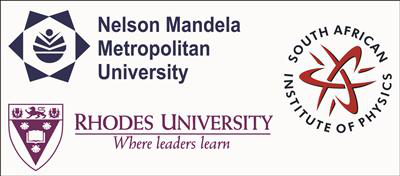Speaker
Would you like to <br> submit a short paper <br> for the Conference <br> Proceedings (Yes / No)?
No
Apply to be<br> considered for a student <br> award (Yes / No)?
Yes
Main supervisor (name and email)<br>and his / her institution
Nico Orce
njorce@uwc.ac.za
University of the Western Cape
Level for award<br> (Hons, MSc, <br> PhD, N/A)?
MSc
Abstract content <br> (Max 300 words)<br><a href="http://events.saip.org.za/getFile.py/access?resId=0&materialId=0&confId=34" target="_blank">Formatting &<br>Special chars</a>
The present study aims at determining the spectroscopic quadrupole moment Qs, for the first 2+ excited state in 40Ar by carrying out the first order Coulomb-excitation reorientation-effect measurements of 40Ar beams at safe energies. Only one such measurement [1]was done in the 1970's with unsafe beam energies. We have used the 208Pb (40Ar, 40Ar)208Pb reaction at 143.2 MeV, for which the minimum distance of closest approach between the nuclear surfaces is ~ 6.6 fm. The first 2+ state at 1460 keV in 40Ar is populated via Coulomb-excitation and the de-excited γ-rays are detected using the AFFRODITE clover detector array[2] which comprises of 8 HPGe detectors (5 at 90° and 3 at 135°). The scattered particles are detected in coincidence with γ-rays using a double sided S3 silicon detector which consists of 24 rings (for angular distribution) on one side and 32 sectors (for Doppler correction) on the other. These measurements were done at low beam currents of ~0.5 nA and with the target (1mg.cm-2 208Pb) positioned at 10.05 mm from the S3 detector at backward angles to be sensitive to Qs. The integrated γ-ray yields per ring carry information about the Qs(2+) value and will be compared with the semi-classical coupled-channel Coulomb-excitation code GOSIA.
References :
1)R. H. Spear, Phys. Rep. 73, 369 (1981).
2) M. Lipoglavsek et al., Nucl. Instr. Meth. Phys. Res., A557, 523 (2006).
Please indicate whether<br>this abstract may be<br>published online<br>(Yes / No)
Yes

